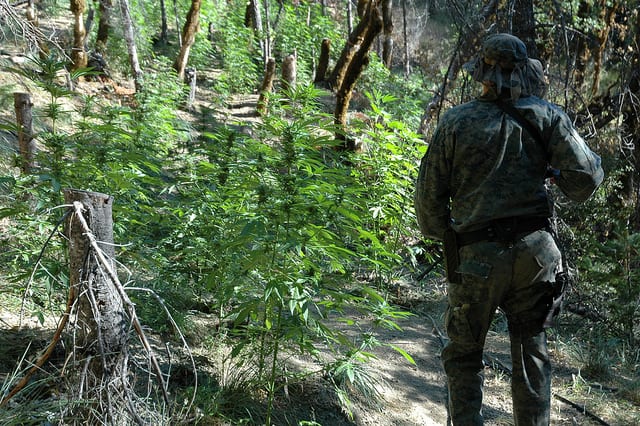
Here’s the link and below is an excerpt.
The fisher is of particular interest. Despite its name, the furry mammal does not live in or near the coast but instead occupies remote, closed-canopy forests, sites that are prime landscapes for illegal marijuana grows. Akin to a weasel, it pursues a wide diet ranging from fruits to small mammals to birds, and has been known to take on the most bristly of forest creatures. It is the “only animal tough and clever enough to prey regularly on porcupines,” observes the Center for Biological Diversity — “no easy feat.”
However skilled a killer it might be, the fisher is not able to discern whether its dinner is laced with rodenticide. This has led to a spike in its mortality, further diminishing its already declining population. That’s the word from scientists working for the Sierra Nevada Adaptive Management Project, out the College of Natural Resources at UC-Berkeley; they have launched the first in-depth analysis of the threats this toxin poses to this rare species. Of the 58 fisher carcasses they autopsied, the data revealed some troubling patterns:
79 percent were exposed to one or more AR [anticoagulant rodenticides] chemical. The number of AR compounds detected per animal ranged from 1 to 4. Both first and second generation ARs were detected, with brodifacoum being most common and detected in 44 of the 46 (96%) exposed fishers, followed by bromodiolone (16 of 46; 35%), diphacinone (8 of 46; 17%), chlorophacinone (four of 46; 9%), difethialone (one of 46; 2%), and wafarin (one of 46; 2%).
The lethality of the chemicals listed is only part of the picture. Another facet is the spatial distribution of the dead Pacific fishers; their bodies were widely distributed across northwestern California and in the southern Sierra Mountains. The fact that there was no clustering of deaths by specific location “indicates that fishers are encountering these poisons in remote, natural forest regions within their home ranges.”
CBD litigated and the fisher listing proposal is due in 2014.. on the CBD website they say the problems are logging and development that caused “habitat destruction”; yet if people are finding them dead scattered around, it might indicate that the habitat is OK. And if people are already doing things that are illegal to fishers, it doesn’t seem like the threat of violating ESA will stop them. Unless you can litigate counties or the Feds to force them to do more law enforcement? But you gotta wonder if the threat of citizens in the forest being killed is not enough to get sufficient law enforcement, why fishers would apparently count more than forest visitors. Not to speak of “what is the rural equivalent of the “broken window” theory?” in terms of letting lawlessness go forth..
It makes me wonder whether some of the toughest environmental problems might not being addressed by groups that specialize in litigation, due to litigation not being the tool to solve the problem. Kind of an example of the old joke..
“Man searches diligently under lamp-post at night. Explains to passer-by that he has lost his keys. “Did you lose them under the lamp-post?” “No.” “Then why are you looking under the lamp-post?” “Because there’s no light anywhere else.”
I’m not saying litigation shouldn’t be a tool in the toolkit, but if we are to have safe and economically vibrant rural communities and sustainable forests, it will take a great deal more than that. Or as I used to say when I wored in NEPA, documenting environmental effects is necessary, but not sufficient, to meet section 101 goals, i.e.:
Federal Government, in cooperation with State and local governments, and other concerned public and private organizations, to use all practicable means and measures, including financial and technical assistance, in a manner calculated to foster and promote the general welfare, to create and maintain conditions under which man and nature can exist in productive harmony, and fulfill the social, economic, and other requirements of present and future generations of Americans.
Sharon your observations about the issue ring true. Litiagation has its place, but too often it is used for the worng reasons, like stopping good forest stewardship. I wonder if people forget the national forests were established as a source of renewable natural resources in 1897, and as far as I know that Congressional direction hasn’t changed.